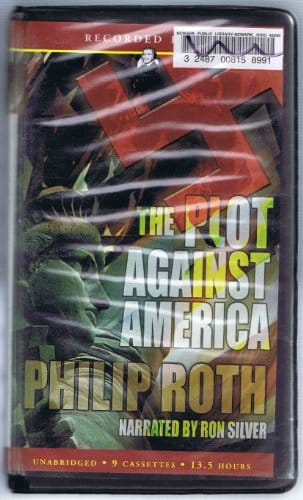Exploring Philip Roth’s ‘The Plot Against America’: Novel, HBO Series and its Stark Warnings
Explore Philip Roth’s The Plot Against America—its storyline, themes, HBO adaptation, and enduring warning about nationalism and democracy’s fragility.

Introduction: A Chilling What-If
Philip Roth’s 2004 novel "The Plot Against America" imagines an alternative United States in which aviator hero Charles Lindbergh defeats Franklin D. Roosevelt in the 1940 presidential election and steers the nation toward isolationism and creeping fascism. By filtering the upheaval through the eyes of the Jewish Levin family in Newark, Roth transforms a sweeping political nightmare into an intimate coming-of-age story. Nearly two decades later, the book and its 2020 HBO miniseries adaptation feel eerily timely, providing a lens through which to examine present-day anxieties about nationalism, propaganda and the fragility of democracy.
Plot Summary: Fear on the Home Front
The narrative follows young Philip Levin, a fictional stand-in for the author, whose everyday concerns—collecting stamps, trading baseball cards, teasing his older brother—are gradually eclipsed by the dread that seeps into Jewish households after Lindbergh’s victory. The new president strikes a "just folks" tone while secretly negotiating non-aggression pacts with Nazi Germany and Imperial Japan. His administration launches the "Just Folks" relocation program, purportedly to promote assimilation but in practice scattering Jewish families and weakening community power. Anti-Semitic street violence grows common, newspapers that speak out are muted, and civil liberties erode beneath the guise of patriotic unity. Through road trips, dinner-table debates and neighborhood gossip, Roth details how national policy invades every corner of domestic life.
Family at the Center
Philip’s parents, Herman and Bess, symbolize diverging strategies for survival. Herman rails loudly against Lindbergh, trusting America’s institutions to self-correct. Bess prefers quiet caution, focusing on protecting her children. Their arguments, rendered in Roth’s trademark conversational prose, capture the confusion of ordinary citizens forced to choose between fight and flight. Extended relatives embody other paths: cousin Alvin enlists in Canada’s army to battle Hitler directly, while Aunt Evelyn marries Rabbi Bengelsdorf, a charismatic cleric who collaborates with the regime, believing he can temper its excesses from within. Each character arc poses a question that remains poignant today: when the country tilts toward authoritarianism, how should individuals respond?
Themes: History, Identity and the American Myth
Roth’s alternate timeline exposes the contingencies beneath America’s self-image. By selecting Lindbergh—a real, idolized figure who flirted with the America First Committee—Roth reminds readers that the ingredients for oppression have existed on U.S. soil. The novel interrogates the notion of American exceptionalism, suggesting that constitutional safeguards can buckle if society fails to defend them. Assimilation versus cultural preservation, the corrosive power of state-sanctioned bigotry, and the manipulation of mass media all surface as central themes.
Equally significant is the portrayal of childhood innocence under siege. Philip’s youthful misinterpretations of adult conversations mirror the public’s struggle to decode political doublespeak. As neighbors disappear or capitulate, the boy learns that safety can be temporary and identity can be weaponized. Roth thereby links personal maturation to political awakening, arguing that civic vigilance is not solely the domain of lawmakers but of every citizen, regardless of age.
Historical Context: Fact Blended with Fiction
Beyond Lindbergh’s documented isolationist speeches, Roth weaves in verifiable events such as the rise of the Bund and the 1939 rally at Madison Square Garden in which 20,000 Americans cheered Nazi slogans. This blending of fact and fabrication heightens the book’s plausibility. Roth also draws on the trauma of European Jewry, mirrored in Herman Levin’s frantic attempts to move his family to Canada as Jewish refugees once sought passage to the United States. By anchoring horror to recognizable milestones, Roth underscores how democracy can perish not only through violent coups but through incremental policy shifts that normalize hatred.
HBO Adaptation: Bringing the Nightmare to Screen
David Simon and Ed Burns, creators of "The Wire," spearheaded the six-episode HBO miniseries released in 2020. Staying largely faithful to the novel, the show amplifies certain characters—most notably Elizabeth Levin, who gains agency as she organizes quiet resistance. Cinematographer Martin Ahlgren employs sepia tones to evoke archival footage, blurring lines between real and imagined pasts. Critics praised the adaptation for its tense pacing and for foregrounding parallels to contemporary populist movements. The series expands on Roth’s ambiguous ending, offering a more explicit depiction of voter suppression and media manipulation, thus resonating with election-year audiences.
Key Differences
The miniseries compresses subplots and heightens overt political drama, whereas Roth’s novel lingers on psychological nuance. Simon’s version gives more screen time to Black characters to emphasize intersectional oppression, a topic only tangentially addressed in the book. These creative adjustments do not dilute the story’s core message; instead, they widen its scope, illustrating that authoritarian tides rarely target only one group.
Why It Matters Today
Reading or watching "The Plot Against America" in the 2020s feels less like historical speculation and more like a cautionary mirror. The resurgence of nationalist rhetoric, disinformation campaigns on social media, and global debates over immigration policies echo Roth’s fictional warnings. The work compels audiences to scrutinize charismatic leaders and to safeguard minority rights before erosion becomes irreversible. Teachers assign the novel in civics courses; book clubs pair it with contemporary news articles; activists cite it when advocating for voting rights protections. Its endurance attests to the power of storytelling as a tool for democratic vigilance.
Conclusion: Literature as Alarm Bell
Philip Roth once wrote that history is shaped by the "great shock" rather than the "impatient advance." "The Plot Against America" embodies that philosophy, jolting readers into recognizing how quickly a society can veer off course. Whether encountered on the page or the screen, the story’s blend of familial tenderness and political terror leaves a lingering question: what choices would we make if confronted with similar threats? By engaging with Roth’s vision, we rehearse our answers in advance, reinforcing the resolve to preserve pluralism and civil liberties in the real America.



